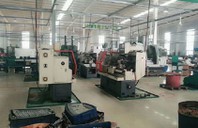1. Carefully check it before use, the appearance is not damaged, the switch action is flexible and no jamming, the power lead and the shell of the power tool should be intact. Use a 500V megohmmeter to measure the insulation resistance value between the winding and the shell, which shall not be lower than 0.5 megohm. The insulation resistance value is shown in the attached table.
2. Hand-held power tools with metal shells should have reliable protective grounding wires. The power lead is a multi-core soft rubber sheathed cable, and both ends of the grounding protection wire should be firmly connected.
3. Handheld power tools should be used by professional personnel with certain professional knowledge. The relevant safety operation rules should be strictly observed during use.
4. Before use, check whether the relevant electrical protection devices and mechanical protection devices are in good condition. Its use should be normal.
Also pay attention to whether the rotating part is flexible and free from jamming.
5. When using Class I hand-held power tools, the user must wear protective equipment that meets the regulations, and set up qualified protective equipment. And take corresponding safety protection measures against electric shock as required, such as installing a leakage protector in the power circuit, or wearing insulating gloves, insulating shoes or standing on an insulating pad.
When using Class II hand-held power tools in humid and narrow places, a leakage switch should be installed, the working current of the electric switch is less than 1.5mA, and the action time is less than or equal to 0.1 seconds. And the leakage switch should be placed in the container and monitored by a special person.
6. Occupational hazards of using hand-held power tools. Hand-arm vibration disease caused by long-term hands-on vibration operation was listed as one of the legal occupational diseases in my country as early as 1957, also known as local vibration disease, and typically manifested as episodic white fingers.




